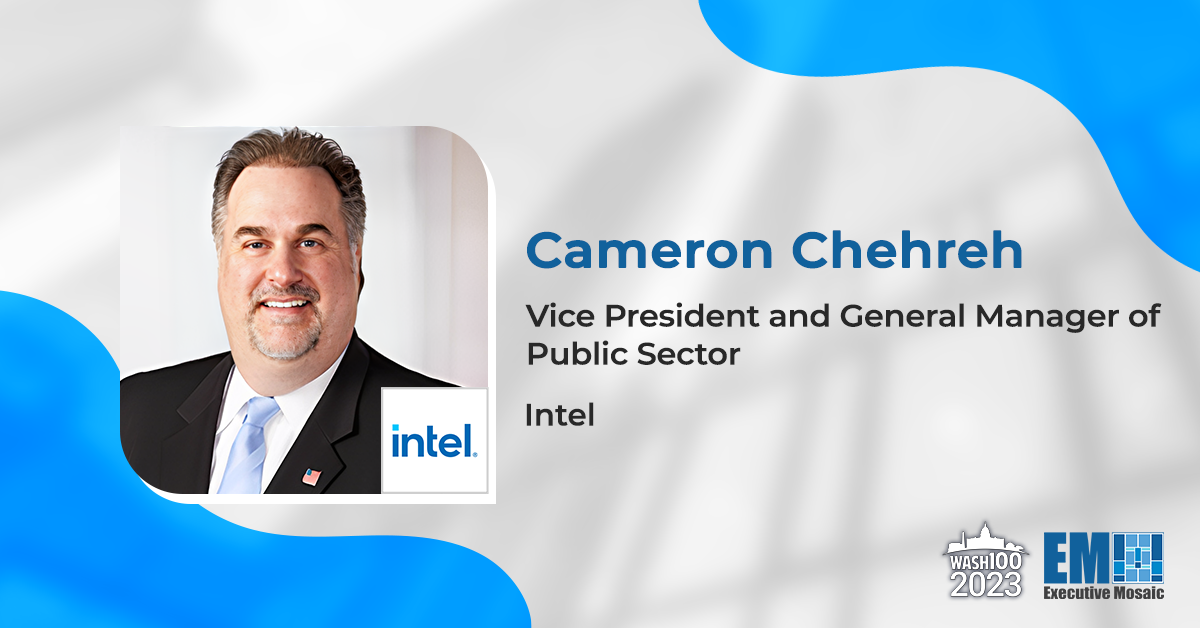Mark DeMerse is a thought leader at Carahsoft on 5G and private wireless networks in the public sector. During his nearly 12 years with the company, the sales director has collaborated with Carahsoft’s ecosystem of cellular solution providers to help government organizations take advantage of the latest telecom technology.
DeMerse recently participated in a Spotlight interview with GovCon Wire during which he explored the growing interest in 5G among the military and government, the innovative 5G use cases he sees emerging, 5G challenges for both the public and private sector and the future of 5G technology.
What does your role as the 5G vertical executive entail at Carahsoft?
As a vertical executive, I’m responsible for building out and managing our 5G and private wireless network ecosystem. Carahsoft has a partner portfolio of about two dozen 5G and private wireless network providers.
Emerging 5G solutions tend to come from larger, established companies. These include organizations such as Federated Wireless, Nokia, Ericsson, JMA Wireless, Intel and Dell.
The private wireless network space involves providers of secure connections. Private wireless networks are typically built by an organization for their exclusive use. When you or I use our smartphones, we’re on a public network connected to a service provider’s tower and using the provider’s spectrum. Organizations like the Department of Defense are interested in using cellular technology to build private networks that are not open to the public, reducing the risk of unauthorized access or data breaches. It’s the same technology and backend infrastructure, but only the DOD has access to the spectrum and the communications tools that comprise the network. That ensures adversaries can’t access classified data.
How do you work with Carahsoft’s vendor ecosystem to help them support government agencies?
We follow market trends in both telecommunications and the public sector, which helps us educate providers on how they can address government agency needs. Conversely, we also educate agencies on the emerging solutions that can support their use cases.
We engage in proactive outreach to prospects and offer webinars and other information sessions. For instance, in August we hosted our first 5G summit, “Powering Innovation Through Technology – 5G: Transforming Government Operations for the Digital Age.” It was co-presented with a few of the aforementioned companies—Intel, Dell, Nokia and Federated Wireless—and it featured presentations and panel discussions with more than a dozen industry and government experts.
How are you seeing interest grow among the public sector in 5G and related technologies?
There’s tremendous interest in 5G from the government. For instance, the DOD has released two tranches of other transaction authorities — similar to a contract — for research and development in the application of 5G technology. They represent about $2 billion invested by government for specific use cases.
The DOD is exploring 5G for use in the battlespace, but much of the interest to date has been around logistics. For instance, the Air Force is using 5G to improve flight lines, the area of a military base for servicing aircraft.
Aircraft like the F-35 are full of sensors that collect large quantities of data on speed, wind, weather, geography and so on. In the past, service crews had to physically remove a hard drive to access the data. Today, at least one base is using a 5G private wireless network to offload the data while the plane is descending for refueling. By the time the plane is refueled, the service team has already read the data.
The DOD is also combining 5G with Internet of Things technology for smart warehousing. 5G provides low-latency, real-time communication between systems and devices in a warehouse. It’s crucial for connecting sensors, smart cameras and RFID tags to track and manage equipment and inventory. That can revolutionize how warehouses operate, with automation for greater efficiency and productivity.
There’s a lot of interest in 5G from state and local agencies as well, especially around smart cities and solutions to address the digital divide. 5G provides fast and reliable connections for use cases like smart street lighting, intelligent transport and waste management.
What are your vendor partners and customers saying about the challenges they face around 5G?
A big challenge for the 5G industry is infrastructure deployment. 5G requires significant expansion of network infrastructure, with a dense network of small cells and base stations. The complexity and cost around permitting and securing access to property to deploy are high.
Another challenge is spectrum allocation. The major carriers rely heavily on the 5G mid-band frequencies. The DOD also owns a lot of that spectrum. So, there’s a little push and pull over who should have access, the private sector or the DOD.
A lot of DOD weapons systems are built around the mid-band of the spectrum. If the government auctioned those frequencies to carriers, the Pentagon might have to redesign weapons systems. But if the private sector doesn’t have the access it needs, that could hamper innovation and commerce.
On the other hand, that conflict has opened the door to new technology. Dynamic spectrum sharing allocates the spectrum based on user demand. It allows 5G cellular technologies to be used in the same frequency band, automatically allocating spectrum to users who need it, when they need it. That would enable both commercial organizations and the DOD to share the same spectrum.
A final challenge is the regulatory framework around 5G and spectrum allocation. The federal government needs to establish clear and updated regulations to govern 5G deployments to make sure network operators adhere to rules around network usage and spectrum sharing.
What do you see as the future of 5G — and beyond — in the government space?
Cellular is an exciting technology that keeps evolving. A new generation emerges about every 10 years, and we can expect 6G to roll out by the end of the decade.
In the meantime, several enhancements are anticipated for 5G. Some of which stem from the CHIPS and Science Act, signed into law last year. One is Open Radio Access Network, a concept that disaggregates traditional radio components for greater interoperability.
In a traditional RAN, the components are tightly integrated, and they all come from the same manufacturer. So, you buy one stack from one vendor, and then you’re locked in, with limited interoperability. But some major providers are partially state-owned companies like ZTE and Huawei, whose equipment has been prohibited for use by the federal government.
ORAN technology can disaggregate the technology to allow the combination of interoperable solutions from multiple vendors. The DOD and Congress are pushing providers to move in this direction in the United States. Technologies like ORAN and the many emerging use cases for 5G are certainly keeping this space interesting.







